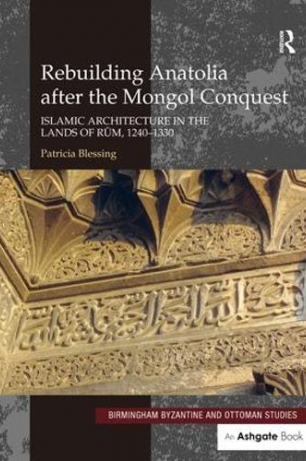
Rebuilding Anatolia after the Mongol Conquest : Islamic Architecture in the Lands of Rum, 1240–1330 / Patricia Blessing
Publication year: 2014
ISBN: 9781472424068
Internet Resource: Please Login to download book
A study of Islamic architecture in Anatolia following the Mongol conquest in 1243. Complex shifts in rule, movements of population, and cultural transformations took place that affected architecture on multiple levels. Beginning with the Mongol conquest of Anatolia, and ending with the demise of the Ilkhanid Empire, centered in Iran, in the 1330s, this book considers how the integration of Anatolia into the Mongol world system transformed architecture and patronage in the region. Traditionally, this period has been studied within the larger narrative of a progression from Seljuk to Ottoman rule and architecture, in a historiography that privileges Turkish national identity. Once Anatolia is studied within the framework of the Mongol Empire, however, the region no longer appears as an isolated case; rather it is integrated into a broader context beyond the modern borders of Turkey, Iran, and the Caucasus republics. The monuments built during this period served a number of purposes: mosques were places of prayer and congregation, madrasas were used to teach Islamic law and theology, and caravanserais secured trade routes for merchants and travelers.
Subject: Architecture, Architecture Adaptive Reuse & Renovation, Architecture Buildings Landmarks & Monuments, Architecture Professional Practice, Architecture Reference, Asie Mineure Histoire, Islamic architecture, Islamic architecture Turkey, Mongols, Mongols Turkey History, Turkey History To 1453, Architectural History, Medieval History 400-1500